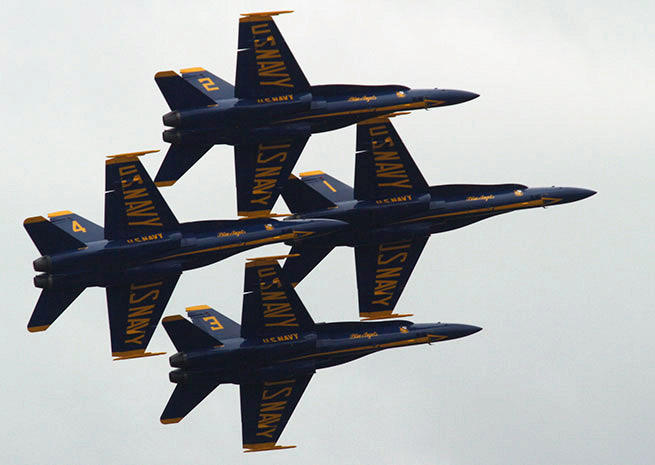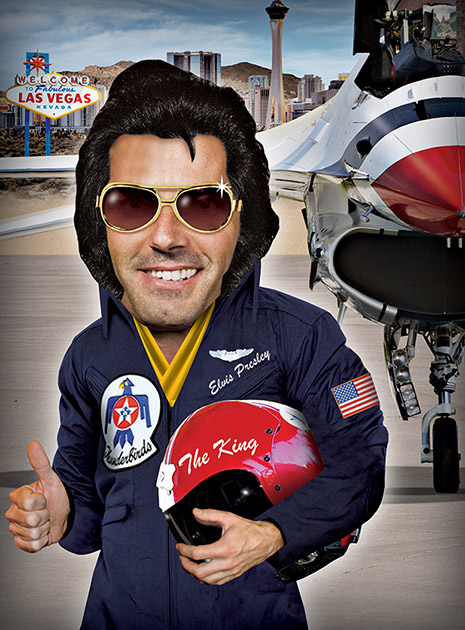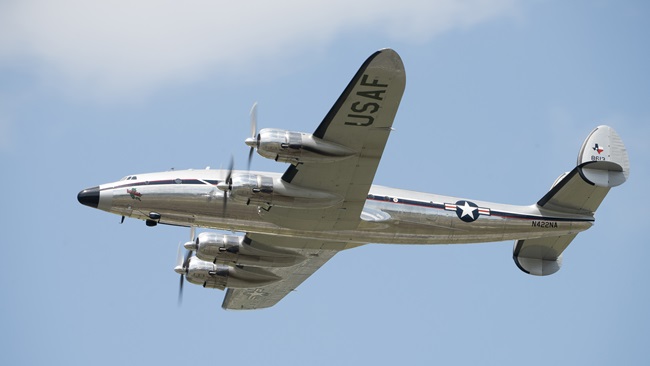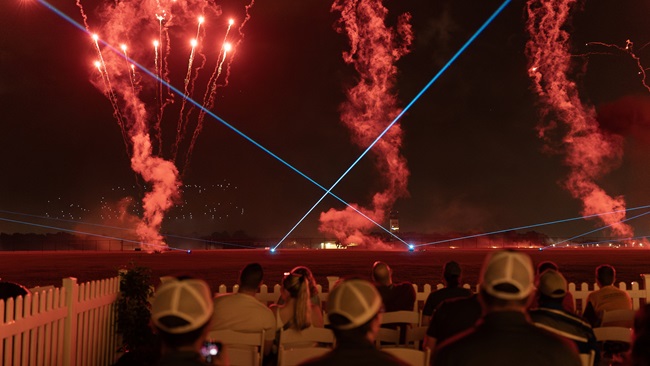Blue Angels, Thunderbirds return
Military acts plan full airshow schedules in 2014

The U.S. Navy Blue Angels and U.S. Air Force Thunderbirds will be back on the airshow circuit in 2014: A yearlong grounding of both teams was lifted by a memo from Defense Secretary Chuck Hagel released on Oct. 18.
Pilots are now working to scrape off some rust, with the Air Force team having been forced to find creative ways to use their time in Las Vegas.
The savings—estimated at $20 million on the Navy side—achieved by grounding the demonstration teams came at a cost to airshow organizers. Faced with the loss of the top draw, about one in five shows on the 2013 schedule was canceled outright, organizers having long depended on the jet teams to draw a crowd. Hagel’s memo referred to the teams’ value as a means to “showcase our superior combat power,” though the revenue lost by 63 major shows canceled for lack of military support reflects the team’s value in economic terms not covered in the memo: The airshow industry lost half its revenue for the year by some estimates.
Blue Angels continued to fly regularly—11 hours a month, just like the rest of the fleet aviators—during the grounding that began April 1 following sequestration (that thing that happened before the government shut down). The Thunderbirds could not fly, but they could continue recruiting appearances—as long as they didn’t leave their home town of Las Vegas. (No travel money.)
The Blue Angels quickly released a schedule of three dozen appearances for 2014, though the Thunderbirds did not immediately follow suit. ABC News reported that the Thunderbirds schedule will be posted in December, and is expected to include appearances at 34 shows, a full season, while flyovers will be curtailed to save $104 million. The Air Force previously performed about 1,000 fly-overs a year, a number that will be drastically reduced for years to come.
“The Thunderbirds will perform some high-visibility flyovers, but we as a Department are not going to conduct a public flyover program at this time,” Air Force spokeswoman Wendy Varhegyi told ABC News.
Air Force pilots grounded in Las Vegas found various ways to occupy their time.

‘The elephant walk’
“Would you guys melt if you got past the city limits sign?” I asked. “Pretty much. We get to deal with the Tasers,” joked Lt. Col. Greg Moseley, commander of the 119-person U.S. Air Force Air Demonstration Squadron.
Since recruiting was limited mostly to Las Vegas in 2013, could we see an Elvis impersonator one day as team boss? “I’m hoping,” Moseley said. “I wish I could grow out those sideburns. If I could, I think I’d be a big hit.”
Thunderbird personnel have been to Las Vegas schools so often they are on a first-name basis with some of the students. “To be completely honest,” Moseley said from his office at Nellis Air Force Base, “probably the guidance counselors and principals got to the point where they were like, ‘Will you guys please leave? You’ve been here every week!’”
Enlisted personnel ended up checking passes at the front gate of Nellis Air Force Base and conducting base housing inspections. “I told my staff to put a person in a Thunderbird uniform on every corner at Nellis and find me a way to support the Nellis installation.”
All members of the U.S. Air Force Aerial Demonstration Team were encouraged to take classes. Most were aimed at career advancement. Thunderbird 5, lead solo pilot Maj. Blaine Jones, already had a master’s degree in bakery science and management—the family business he left to join the air force. You can see him talk about it on YouTube. He headed to the Air Force Command and Staff College for an education aimed at his future.
From April 5 to July 23 the Thunderbirds practiced the ground portion of their show and pilots were allowed to start up and taxi down the runway, but not to take off. “We joked around and called it the elephant walk,” Moseley said. “We taxied at less than 15 knots.”
In August and September they were allowed to make just enough proficiency flights as combat pilots to knock the 109-days of rust off, but not to practice the Thunderbirds aerial show. “We would take off as a two-ship,” Moseley said. “We would go out to the airspace and begin to pull Gs to re-accustom ourselves to that. We flew a whole lot of instruments,” he said, referring to maintaining skills needed to routinely fly in bad weather.
Twelve officers on the team thought they were achieving a dream in 2013—a two-year tour with one of the most elite groups in the Air Force, but for those newly assigned, the first year consisted of just one appearance at Titusville, Fla. They have been extended an extra year.
“We’re fired up,” Moseley said. “We’re looking forward to a great season next year. The team is postured and ready for whatever lies ahead of us. We’ll be ready to fly our certification flight with Gen. [Mike] Hostage the first week of March.” Hostage is commander of the Air Combat Command at Langley Air Force Base, Va., and Moseley’s boss.
Nothing to do
The Navy’s Blue Angels had little to say about what they do when there is nothing to do, but the Pentagon provided this statement: “The Blue Angels have remained proficient by flying 11 hours a month (same as the fleet). When not conducting proficiency flights, the team has participated in various community outreach activities. However, the team's participation in these outreach activities ceased as of October 1 based on guidance from the Office of the Secretary of Defense stating that all Departmental community and public outreach activities will cease.”



